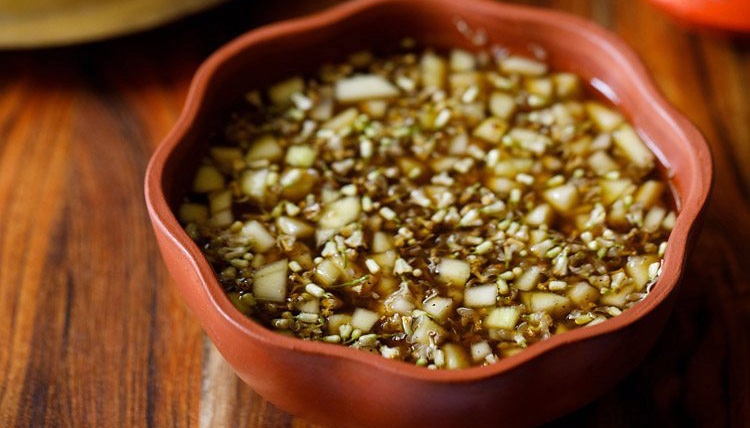The term ‘Ugadi’ originates from the combination of two Sanskrit words ‘yuga’ and ‘aadi’, which translate to ‘era’ and ‘beginning’, respectively. As per the Panchanga calendar, the initial day of the ‘Chaitra’ month marks the celebration of Ugadi, which is observed as the ‘New Year’ in the Indian / Bhartiya states of Maharashtra, Andhra Pradesh, Telangana and Karnataka. The day of the festival is linked with Lord Brahma, who is considered the creator of the universe.
Significance
Ugadi holds great significance since ancient times when Lord Brahma started creating the Earth and all its living beings. The festival is celebrated to recognize the day of this creation and the start of a new astronomical cycle. People celebrate with prayers and festivities, experiencing happiness and satisfaction. A crucial element of Ugadi is beginning with positive expectations. Additionally, the day coincides with the beginning of spring, symbolized by the rejuvenation of plants, shoots, and leaves, signifying a fresh and prosperous start.
History
1. Story behind use of mango leaves – Narada Muni once brought a mango to Lord Shiva. Lord Ganesha and Lord Kartikeya both wanted to have the mango, and so Lord Shiva proposed a competition between them. He declared that whoever could travel around the world and return first would win the fruit. Lord Kartikeya immediately mounted his peacock and began his journey, while Lord Ganesha simply went around his parents, considering them to be his world, and was ultimately declared the winner. Lord Kartikeya then declared that as a remembrance of this event, all doorways should be adorned with mango leaves.
2. The creation of the world is considered the primary story of Ugadi, with Lord Brahma playing a crucial role. According to Sanatan history, Lord Brahma initiated the creation of the universe when he awoke, and this work began on the day of Ugadi. It is believed that on this day, Lord Brahma conceived all living and non-living entities in his mind.
3. Lord Rama’s Rajyabhishek – The auspicious occasion of Lord Rama’s Rajyabhishek is celebrated on the day of Chaitra Paadyami. This day marks the coronation of Lord Rama as the King of Ayodhya, and it is believed to be so propitious that it was chosen for this significant event in Lord Rama’s life. According to legend, Diwali, which is celebrated on the day of Lord Rama’s arrival in Ayodhya, is also associated with this event.
4. As per the history, the end of Dwapara Yuga witnessed a fierce battle that resulted in the death of Lord Krishna’s sons and grandsons. The reason behind the battle was a curse from a sage, which ultimately led to Lord Krishna’s demise when he was struck by an arrow. According to tradition, this occurred on the day of Ugadi. Lord Ved Vyasa predicted that the beginning of the Kali Yuga era would follow soon after Lord Krishna’s departure. Sankrit shlok:- Yesmin Krishno divamvyataha, Tasmat eeva pratipannam Kaliyugam Paraphrase
5. Beginning of Kaliyuga – The passing of Lord Krishna on Chaitra Shuddha Paadyami signified the end of the Dwapara Yuga and the beginning of the Kali Yuga, marking the starting point of a new era.
6. Matsya Avatar – According to ancient Hindu texts, Lord Maha Vishnu took the form of Matsya, the fish, three days after Ugadi to rescue the world and its living beings from the great flood known as Pralaya.
The start of spring season coincides with the beginning of Ugadi festivities, which is considered to bring happiness, health, and prosperity throughout the year. People engage in various rituals and make new purchases to mark the occasion. The Ugadi festival includes the ‘Panchanga Sravanam’ event where future predictions and remedies for overcoming potential challenges are offered. It is believed that both the readers and listeners of the Panchanga scriptures benefit and are blessed, similar to taking a dip in the holy river Ganga. In Maharashtra, Andhra, Telangana, Karnataka, a mixture of neem and jaggery called ‘Bevu Bella’ is distributed, symbolizing that life comprises both sweet and bitter moments that should be accepted as part of life. The festival reminds people that the Lord is always present to bless and protect them.
Ritual, practices & food
During Ugadi, devotees engage in rituals and pujas to seek blessings from God for health, wealth, prosperity, and success. It is an opportune time to initiate new ventures or personal goals for betterment. Preparations for Ugadi begin a few days ahead, including cleaning the entire house and shopping for new clothes and other necessary items. On the day of the festival, devotees wake up before dawn and take ritualistic oil baths. They decorate their homes with colourful rangolis and mango leaf strings, symbolizing good harvest and well-being.

The unique dish of Ugadi Pachhadi is prepared, consisting of six different tastes from sweet to bitter, including neem buds, jaggery, green chili, salt, tamarind, and raw mango. This dish represents various experiences in life that one must embrace. Priests make mantras, chants, and predictions for the upcoming year, and families gather for feasts and celebrations in addition to visiting temples on this propitious day of Ugadi.